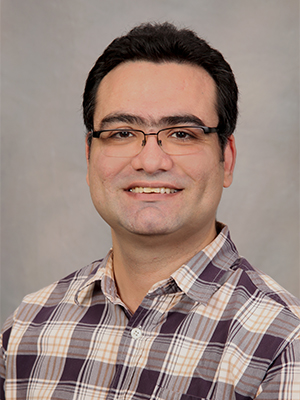
Control Seminar
Novel Regularization Techniques for Solving Practical Optimal Control Problems Using Indirect Optimization Methods
This event is free and open to the publicAdd to Google Calendar

ABSTRACT: Trajectory optimization is an important task for enhancing the operation of many dynamical systems. Trajectory optimization problems are formulated as constrained optimal control problems (OCPs), which are typically solved numerically using two broad solution techniques: 1) indirect methods (based on Pontryagin’s minimum principle) and 2) direct methods (that transcribe OCPs into parametric optimization problems). A highly-desirable feature of indirect methods, specifically for space applications, is that high-resolution trajectories can be generated, which satisfy the first-order necessary conditions of optimality. However, numerical solution of the resulting two-point or multi-point boundary-value problems can become quite challenging. In this talk, we review a number of recent control regularization techniques that alleviate some of the challenges associated with solving the resulting boundary-value problems. In particular, the Hyperbolic Tangent Smoothing (HTS) method and a recently developed Composite Smooth Control (CSC) framework will be reviewed. The proposed framework amounts to an invariant embedding that reduces the original, difficult-to-solve, multi-point boundary-value problems into a two-point boundary-value problem with continuous, differentiable control inputs. Application of the proposed regularization techniques will be demonstrated for solving a number of important spacecraft trajectory optimization problems including, 1) minimum- spacecraft trajectories, 2) low-thrust spacecraft trajectories, 3) simultaneous trajectory optimization and propulsion sub-system design of spacecraft. The function space co-optimization problem of spacecraft power subsystem parameters along with the main trajectory is solved with the objective to maximize the net payload delivered, 4) incorporation of realistic performance models of multi-mode electric thrusters that offers unprecedented system-level optimization opportunities, and 5) realistic cislunar spacecraft trajectory optimization in a high-fidelity ephemeris model and in the presence of eclipses. Directions for future work will be presented.
BIO: Ehsan Taheri is an Assistant Professor of Aerospace Engineering and is the principal investigator of the Aero-Astro Computational and Experimental (ACE) Laboratory at Auburn University. Dr. Taheri is interested in developing numerical methods for solving practical optimal control problems in the fields of space and atmospheric flights. His
current research thrusts include development of advanced regularization methods, trajectory optimization of spacecraft equipped with multi-mode propulsions systems, and real-time path-planning of multi-rotor aerial vehicles. He is the author or co-author of over 100 technical publications, and his research efforts have been supported by the United States Air Force program (AFWERX), Jet Propulsion Laboratory (JPL) and AFRL. Dr. Taheri is a senior member of the American Institute of Aeronautics and Astronautics (AIAA).
***Event will take place via Zoom. Zoom link and password will be distributed to the Controls Group e-mail list-serv. To join this list-serv, please send an (empty) email message to [email protected] with the word “subscribe” in the subject line. Zoom information is also available upon request to Katherine Godwin ([email protected]).
 MENU
MENU 
